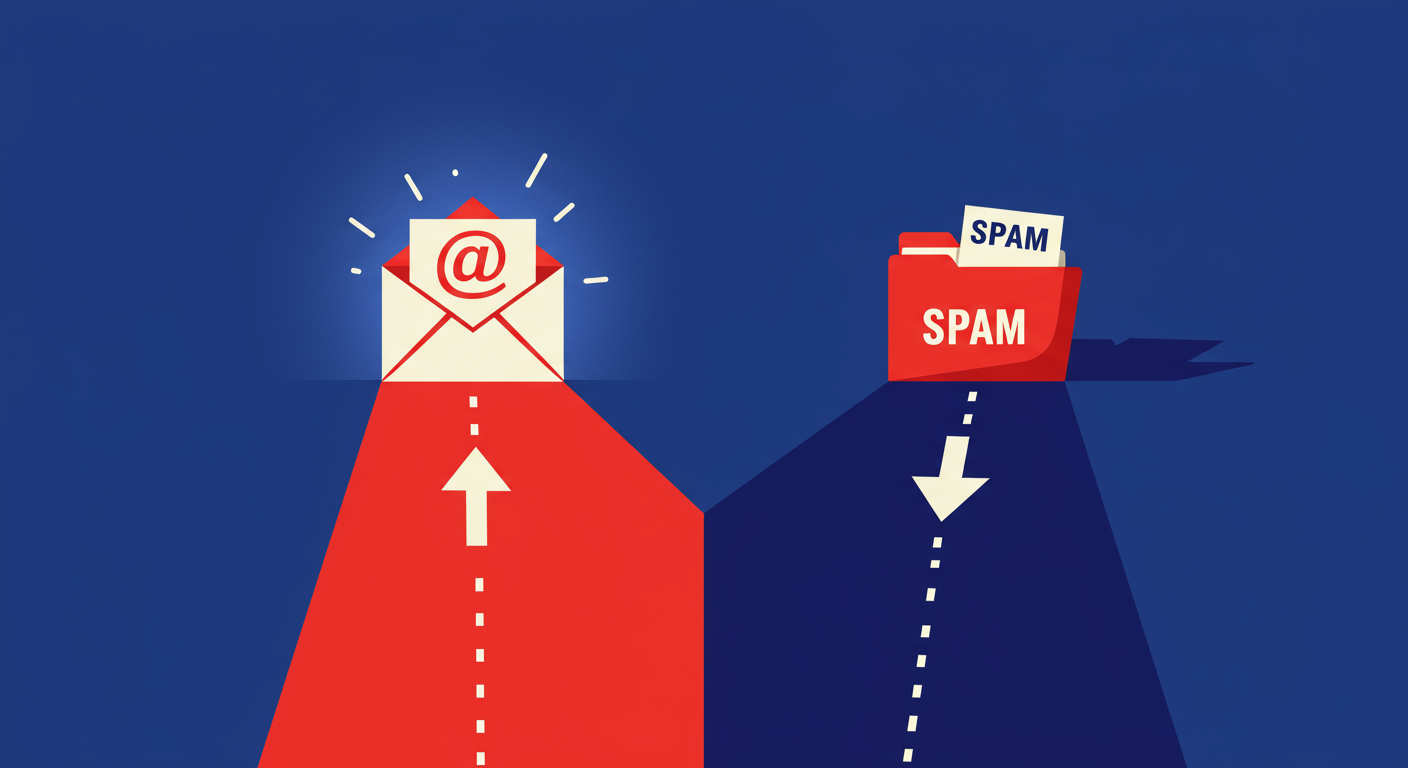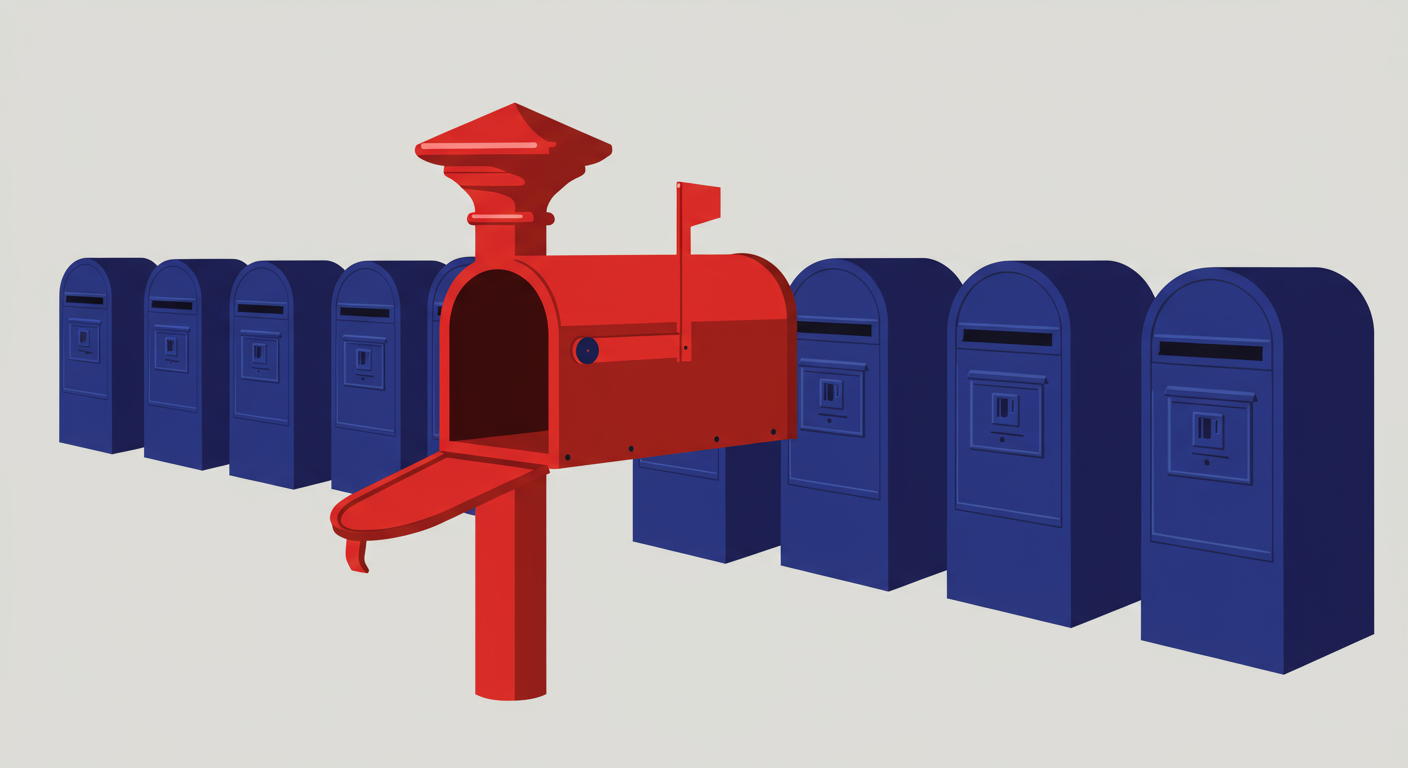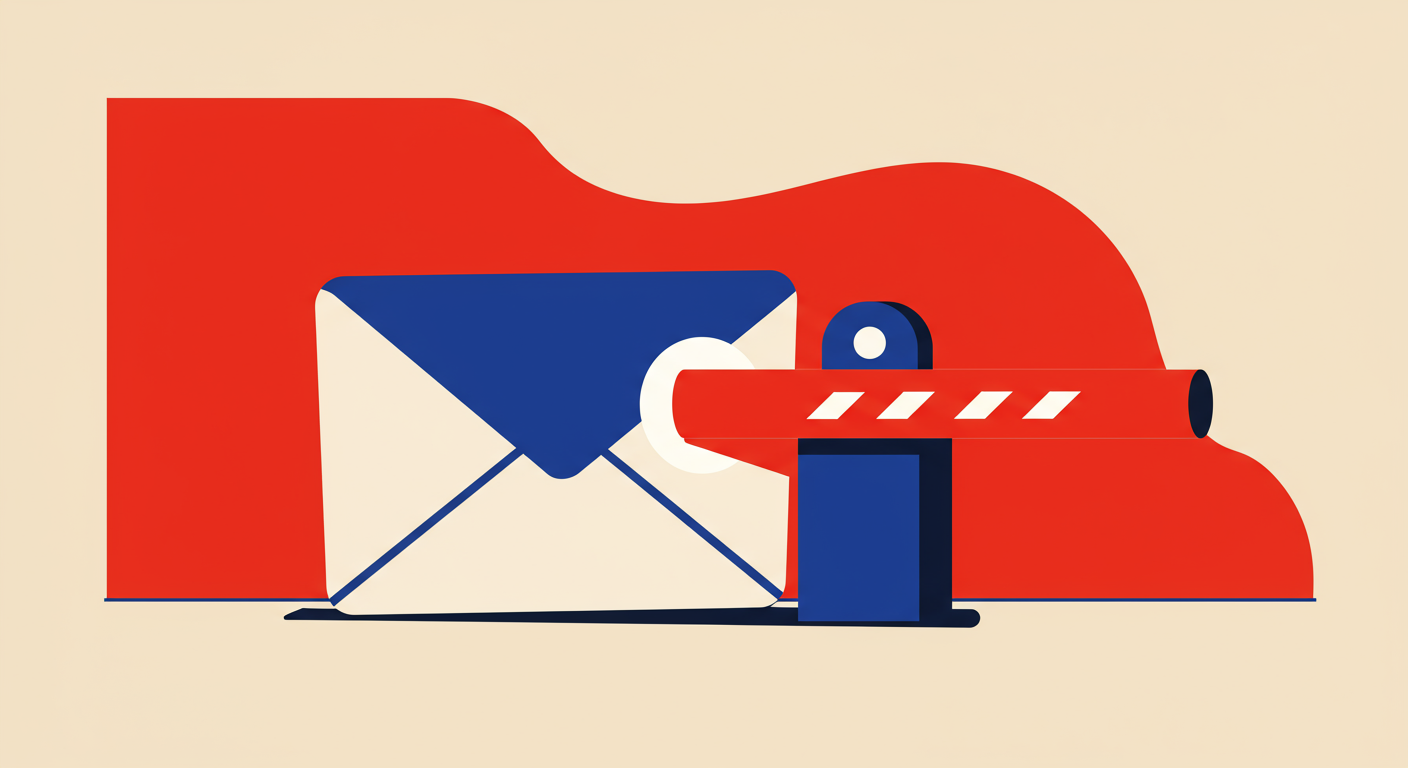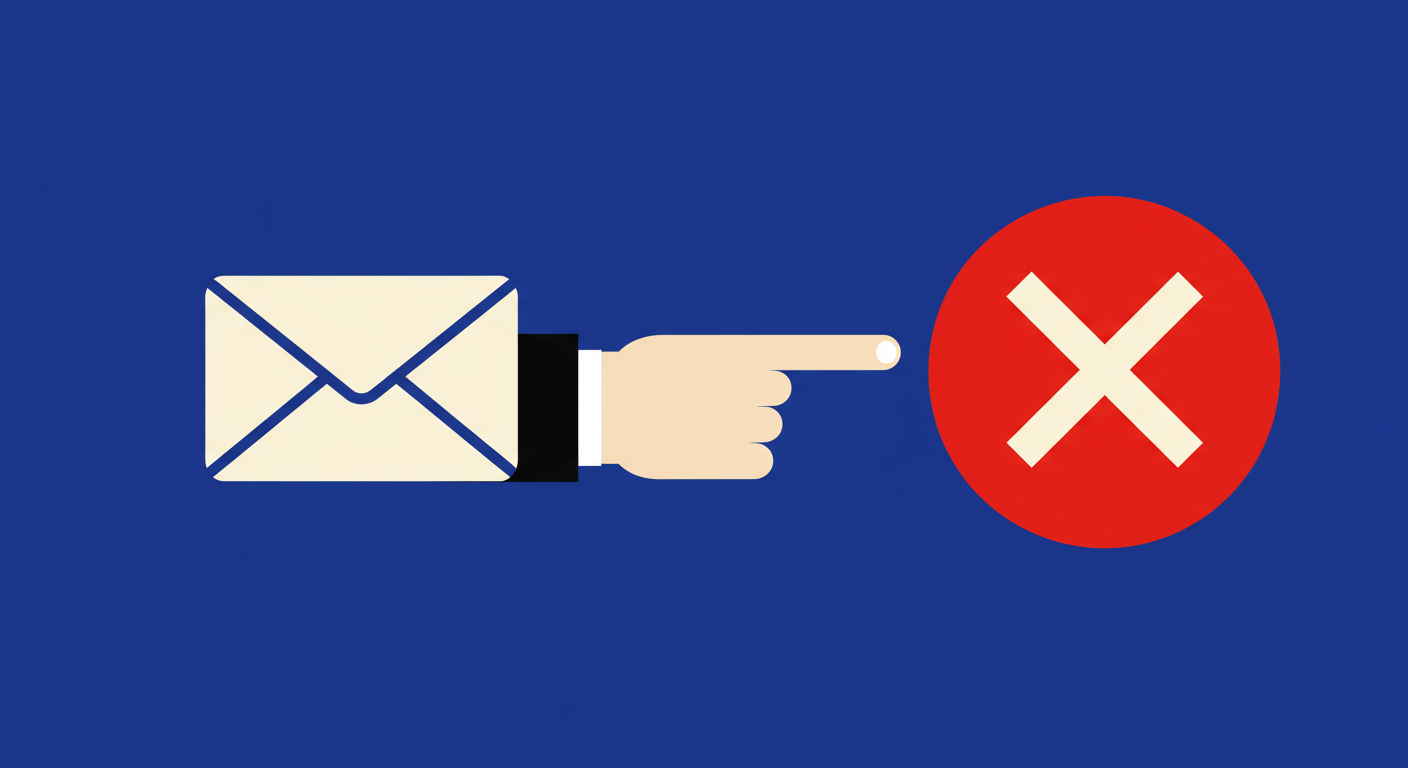A practical guide to understanding your email domain reputation



If you send emails for your business, you've probably heard the term 'domain reputation' thrown around a lot lately. It's not just another piece of marketing jargon; it's one of the most critical factors determining whether your emails actually reach your audience. For years, the focus was heavily on IP reputation, but the landscape has shifted. Now, mailbox providers like Gmail and Outlook are placing immense weight on the reputation of your sending domain itself.
Think of domain reputation like a credit score for your email sending. A good score tells providers you're a trustworthy sender, and they'll gladly deliver your messages to the inbox. A bad score signals that you might be sending spam or unwanted mail, causing your emails to be filtered, sent to the junk folder, or blocked entirely. This score isn't just one number; it's a complex assessment built over time, based on your sending practices and how recipients interact with your mail.
Your domain's reputation isn't based on a single action but is a composite of many different signals that mailbox providers analyze. The foundation of a good reputation starts with proper authentication. Protocols like SPF (Sender Policy Framework), DKIM (DomainKeys Identified Mail), and DMARC (Domain-based Message Authentication, Reporting, and Conformance) are non-negotiable. They act as your domain's digital passport, proving to receivers that your emails are legitimately from you and haven't been forged by a malicious actor.
Beyond the technical setup, recipient engagement is arguably the most influential factor. Mailbox providers are watching closely how people interact with your emails. Positive signals include opens, clicks, replies, and marking an email as 'not spam'. These actions tell providers that your content is valued. Conversely, negative signals like high spam complaint rates, unsubscribes, and recipients deleting emails without opening them will quickly tarnish your reputation. Hitting spam traps, which are pristine email addresses used to identify spammers, is another major red flag.
Your reputation is also determined by your sending history and volume. A domain that has been sending consistent, wanted email for a long time will naturally have a stronger reputation than a brand-new domain. Sudden, massive spikes in sending volume from a new or previously inactive domain can look suspicious to providers and negatively impact your standing. Consistency and a gradual build-up of volume are key to establishing trust.

The direct consequence of your domain reputation is its effect on email deliverability, which is the ability to get your emails into the inbox. A strong reputation means providers see you as a legitimate sender, leading to high inbox placement rates. Your subscribers will see your messages in their primary inbox, where they are most likely to be opened and engaged with. This is the goal every sender should be striving for.
When your reputation starts to slip, you won't necessarily be blocked overnight. Often, the first sign of trouble is that your emails start getting throttled, meaning providers will slow down the rate at which they accept your mail. Or, your emails may be diverted to secondary tabs, like Gmail's Promotions tab, or worse, the spam folder. While a promotion tab placement isn't the end of the world, landing in spam is a clear sign that your sender reputation is in trouble.
The most severe outcome of a poor reputation is being added to a blacklist (or blocklist). These are publicly or privately maintained lists of domains and IPs known for sending spam. Once you're on a major blacklist, many mailbox providers will simply refuse to accept any email from your domain. Getting removed from a blacklist can be a difficult and time-consuming process, making it critical to avoid getting listed in the first place.
It's important to understand the distinction between IP reputation and domain reputation. For a long time, IP reputation was the primary metric. This is the reputation associated with the specific IP address, or the server, sending your emails. If you use a large email service provider, you are likely on a shared IP, meaning your reputation is influenced by the other senders using that same IP address.

Domain reputation, on the other hand, is tied directly to your sending domain (e.g., @suped.com). This reputation is more permanent and portable. It follows you even if you switch email service providers or change your IP address. Think of your IP as the car you drive, and your domain as your driver's license. You can change cars, but your driving record stays with you.
This shift towards prioritizing domain reputation is a logical evolution. It gives mailbox providers a more stable, long-term view of a sender's behavior. It also empowers senders by giving them more direct control over their own destiny. Your reputation is no longer as susceptible to the actions of a 'noisy neighbor' on a shared IP. It’s now squarely in your hands, based on your own sending practices.
The key takeaway is that while both matter, your domain's reputation is the asset you truly own and must protect for the long run. Here are the crucial distinctions:
Now for the practical part. Since your domain reputation is so vital, you need to actively monitor and manage it. The first step is to get a baseline understanding of where you stand. A great way to start is by checking if your domain is listed on any common email blocklists. Being on a blocklist (also known as a blacklist) is a strong indicator of a serious reputation problem that needs immediate attention.
 Spamhaus
Spamhaus 0Spam
0Spam Cisco
Cisco NoSolicitado
NoSolicitado URIBL
URIBL abuse.ro
abuse.ro ALPHANET
ALPHANET Anonmails
Anonmails Ascams
Ascams BLOCKEDSERVERS
BLOCKEDSERVERS Calivent Networks
Calivent Networks EFnet
EFnet
 JustSpam
JustSpam Kempt.net
Kempt.net
 NordSpam
NordSpam RV-SOFT Technology
RV-SOFT Technology
 Scientific Spam
Scientific Spam Spamikaze
Spamikaze SpamRATS
SpamRATS SPFBL
SPFBL Suomispam
Suomispam System 5 Hosting
System 5 Hosting Team Cymru
Team Cymru Validity
Validity www.blocklist.de Fail2Ban-Reporting Service
www.blocklist.de Fail2Ban-Reporting Service ZapBL
ZapBL 2stepback.dk
2stepback.dk Fayntic Services
Fayntic Services ORB UK
ORB UK technoirc.org
technoirc.org TechTheft
TechTheft Spamhaus
Spamhaus 0Spam
0Spam Cisco
Cisco NoSolicitado
NoSolicitado URIBL
URIBL abuse.ro
abuse.ro ALPHANET
ALPHANET Anonmails
Anonmails Ascams
Ascams BLOCKEDSERVERS
BLOCKEDSERVERS Calivent Networks
Calivent Networks EFnet
EFnet
 JustSpam
JustSpam Kempt.net
Kempt.net
 NordSpam
NordSpam RV-SOFT Technology
RV-SOFT Technology
 Scientific Spam
Scientific Spam Spamikaze
Spamikaze SpamRATS
SpamRATS SPFBL
SPFBL Suomispam
Suomispam System 5 Hosting
System 5 Hosting Team Cymru
Team Cymru Validity
Validity www.blocklist.de Fail2Ban-Reporting Service
www.blocklist.de Fail2Ban-Reporting Service ZapBL
ZapBL 2stepback.dk
2stepback.dk Fayntic Services
Fayntic Services ORB UK
ORB UK technoirc.org
technoirc.org TechTheft
TechTheft Spamhaus
Spamhaus 0Spam
0Spam Cisco
Cisco NoSolicitado
NoSolicitado URIBL
URIBL abuse.ro
abuse.ro ALPHANET
ALPHANET Anonmails
Anonmails Ascams
Ascams BLOCKEDSERVERS
BLOCKEDSERVERS Calivent Networks
Calivent Networks EFnet
EFnet
 JustSpam
JustSpam Kempt.net
Kempt.net
 NordSpam
NordSpam RV-SOFT Technology
RV-SOFT Technology
 Scientific Spam
Scientific Spam Spamikaze
Spamikaze SpamRATS
SpamRATS SPFBL
SPFBL Suomispam
Suomispam System 5 Hosting
System 5 Hosting Team Cymru
Team Cymru Validity
Validity www.blocklist.de Fail2Ban-Reporting Service
www.blocklist.de Fail2Ban-Reporting Service ZapBL
ZapBL 2stepback.dk
2stepback.dk Fayntic Services
Fayntic Services ORB UK
ORB UK technoirc.org
technoirc.org TechTheft
TechTheft Spamhaus
Spamhaus 0Spam
0Spam Cisco
Cisco NoSolicitado
NoSolicitado URIBL
URIBL abuse.ro
abuse.ro ALPHANET
ALPHANET Anonmails
Anonmails Ascams
Ascams BLOCKEDSERVERS
BLOCKEDSERVERS Calivent Networks
Calivent Networks EFnet
EFnet
 JustSpam
JustSpam Kempt.net
Kempt.net
 NordSpam
NordSpam RV-SOFT Technology
RV-SOFT Technology
 Scientific Spam
Scientific Spam Spamikaze
Spamikaze SpamRATS
SpamRATS SPFBL
SPFBL Suomispam
Suomispam System 5 Hosting
System 5 Hosting Team Cymru
Team Cymru Validity
Validity www.blocklist.de Fail2Ban-Reporting Service
www.blocklist.de Fail2Ban-Reporting Service ZapBL
ZapBL 2stepback.dk
2stepback.dk Fayntic Services
Fayntic Services ORB UK
ORB UK technoirc.org
technoirc.org TechTheft
TechTheft Spamhaus
Spamhaus 0Spam
0Spam Cisco
Cisco NoSolicitado
NoSolicitado URIBL
URIBL abuse.ro
abuse.ro ALPHANET
ALPHANET Anonmails
Anonmails Ascams
Ascams BLOCKEDSERVERS
BLOCKEDSERVERS Calivent Networks
Calivent Networks EFnet
EFnet
 JustSpam
JustSpam Kempt.net
Kempt.net
 NordSpam
NordSpam RV-SOFT Technology
RV-SOFT Technology
 Scientific Spam
Scientific Spam Spamikaze
Spamikaze SpamRATS
SpamRATS SPFBL
SPFBL Suomispam
Suomispam System 5 Hosting
System 5 Hosting Team Cymru
Team Cymru Validity
Validity www.blocklist.de Fail2Ban-Reporting Service
www.blocklist.de Fail2Ban-Reporting Service ZapBL
ZapBL 2stepback.dk
2stepback.dk Fayntic Services
Fayntic Services ORB UK
ORB UK technoirc.org
technoirc.org TechTheft
TechTheftImproving your reputation is all about adopting best practices. The single most effective strategy is to focus on list hygiene. Regularly clean your email list to remove inactive or unengaged subscribers. Sending emails to people who never open them sends a powerful negative signal to providers. Also, consider implementing a double opt-in process, where new subscribers must confirm their email address. This ensures you're building a list of people who truly want to hear from you.
If you're starting with a new domain or haven't sent emails in a while, it's crucial to 'warm it up'. This means starting with a small volume of emails sent to your most engaged subscribers and gradually increasing the volume over several weeks. This methodical approach demonstrates good behavior to mailbox providers, allowing you to build a positive domain reputation from the ground up.
Ultimately, your email domain reputation is one of your most valuable marketing assets. It's not something you can fix with a single trick or a one-time campaign. It requires a long-term commitment to sending relevant, wanted emails to a clean list of subscribers who have explicitly agreed to receive them. By focusing on authentication, recipient engagement, and consistent sending practices, you can build and maintain a strong reputation that ensures your messages have the best possible chance of reaching the inbox.












